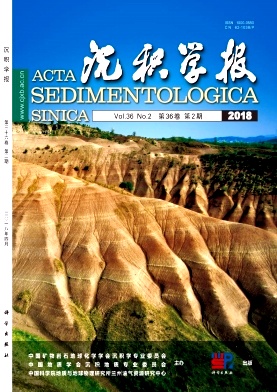Discovery and Significance of Seismites in Huangqikou Formation of Changcheng System, Middle Helan Mountain
doi: 10.14027/j.issn.1000-0550.2018.025
- Received Date: 2016-11-15
- Rev Recd Date: 2017-04-25
- Publish Date: 2018-04-10
-
Key words:
- Helan Mountain /
- Changcheng System /
- seismites /
- soft-sediment deformation structures /
- Huangqikou Formation
Abstract: Through detailed field geological survey, various soft-sediment deformation structures are found in Huangqikou Formation in Changcheng System of the middle part of Helan Mountain, including liquefied sand dykes(veins), liquefied hydraulic fracture structures and liquefied breccias, load structures, ball-and-pillow structures, beaded structures, convolution lamination (liquefied curled deformation structures) and step microfaults. Relatively higher compositional maturity and lower texture maturity of quartz sandstones are observed under microscope. Sandstone grains are mostly subround-round, with various sizes. Muddy sediments mix with clastic particles, or intersperse in sandstones in irregular vein-like form. Micro thrust faults are found cutting laminae under microscope. The sedimentary environment of Huangqikou Formation is identified as littoral-neritic sea by analyses of environment and observation of sedimentary structures (such as ridged ripples, small cross-bedding, horizontal bedding and mud cracks). Soft-sediment deformation structures in Huangqikou Formation are most likely formed by seismic events, not gravitational load. Four seismic event layers are identified in middle-low part of the first member of Huangqikou Formation. We speculate that at early stage of deposition of Huangqikou Formation, crustal movement was relatively active, then gradually tended to a stable state, appearance of seismites may be related to tectonic setting of extension-rifting of Helan aulacogen.
| Citation: | YANG BaoZhong, JIN Wei, ZENG ZuoXun, WU HaiHui. Discovery and Significance of Seismites in Huangqikou Formation of Changcheng System, Middle Helan Mountain[J]. Acta Sedimentologica Sinica, 2018, 36(2): 280-290. doi: 10.14027/j.issn.1000-0550.2018.025 |






 DownLoad:
DownLoad: